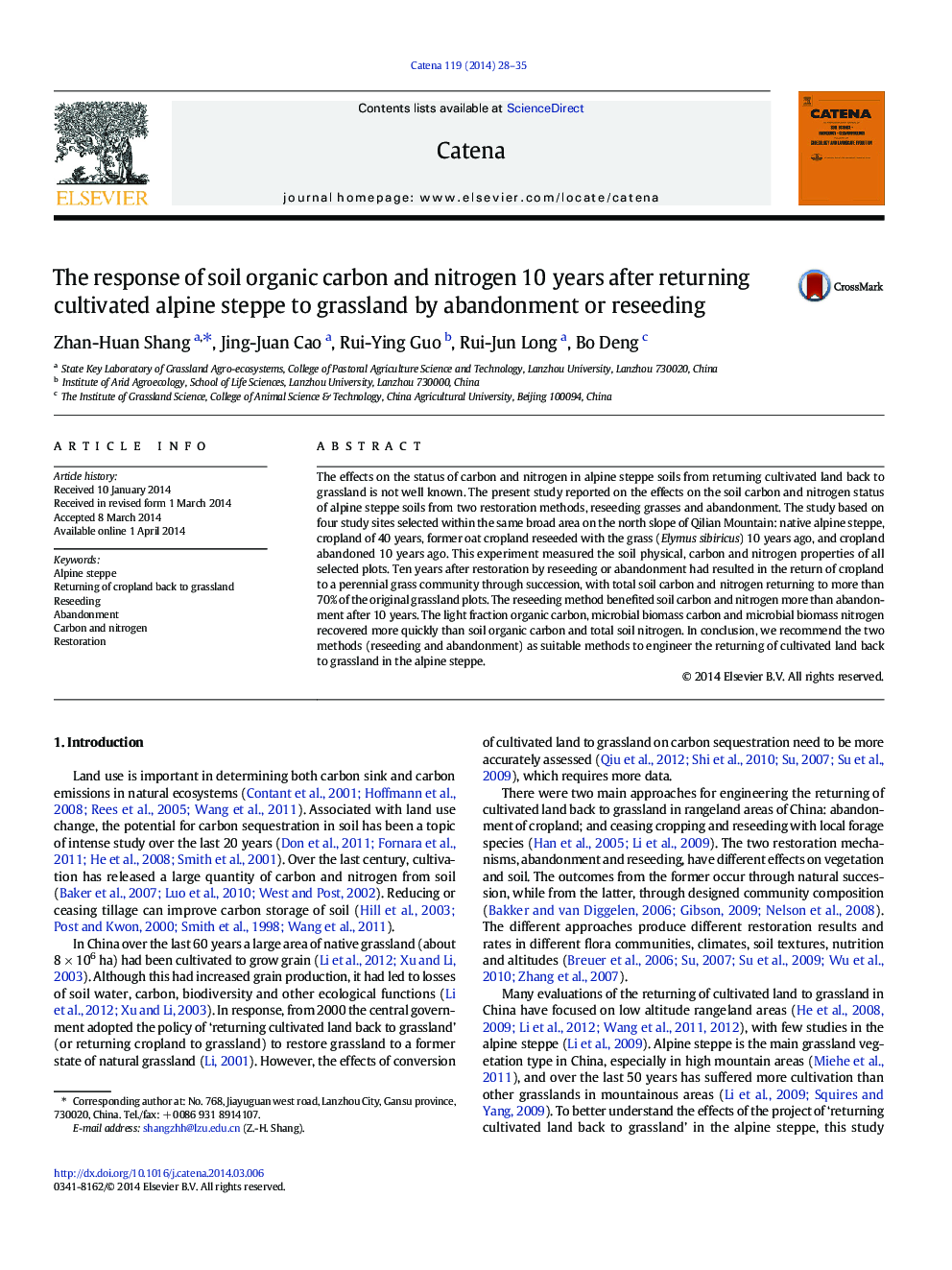| Article ID | Journal | Published Year | Pages | File Type |
|---|---|---|---|---|
| 4571444 | CATENA | 2014 | 8 Pages |
•We evaluated impact of returning of former cultivated land to grassland on soil carbon.•This was the first data report about alpine steppe.•This investigation was conducted after 10 years of abandonment and reseeding.•The reseeding method benefited soil C and N more than abandonment.
The effects on the status of carbon and nitrogen in alpine steppe soils from returning cultivated land back to grassland is not well known. The present study reported on the effects on the soil carbon and nitrogen status of alpine steppe soils from two restoration methods, reseeding grasses and abandonment. The study based on four study sites selected within the same broad area on the north slope of Qilian Mountain: native alpine steppe, cropland of 40 years, former oat cropland reseeded with the grass (Elymus sibiricus) 10 years ago, and cropland abandoned 10 years ago. This experiment measured the soil physical, carbon and nitrogen properties of all selected plots. Ten years after restoration by reseeding or abandonment had resulted in the return of cropland to a perennial grass community through succession, with total soil carbon and nitrogen returning to more than 70% of the original grassland plots. The reseeding method benefited soil carbon and nitrogen more than abandonment after 10 years. The light fraction organic carbon, microbial biomass carbon and microbial biomass nitrogen recovered more quickly than soil organic carbon and total soil nitrogen. In conclusion, we recommend the two methods (reseeding and abandonment) as suitable methods to engineer the returning of cultivated land back to grassland in the alpine steppe.
